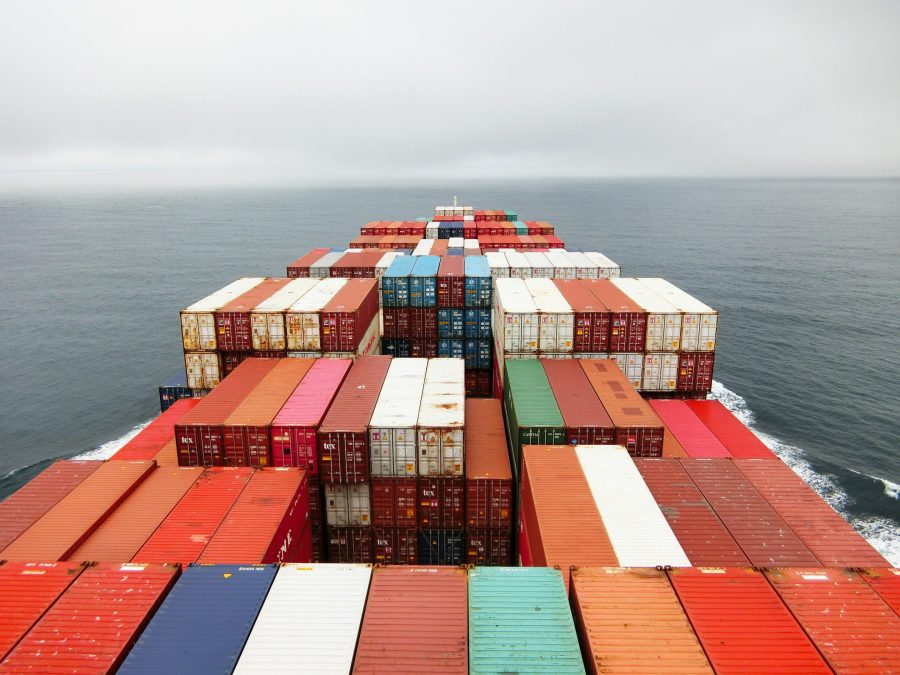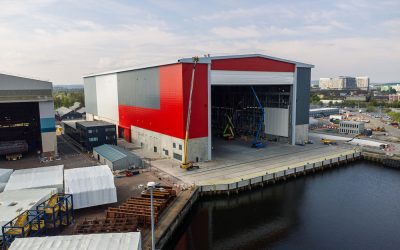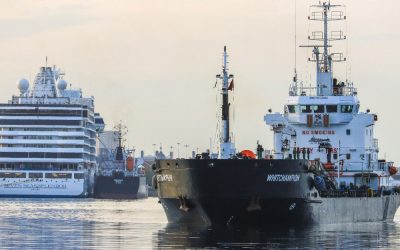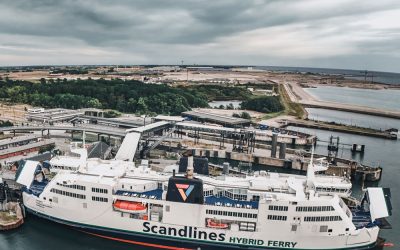With growing container ship capacity and increased numbers of container losses at sea coinciding, classification society ClassNK has published two sets of guidelines to help shipping companies improve cargo safety at sea
The recent increase in container ship capacity – a response to the growing demand for freight container transport – has coincided with a sharp increase in the number of containers lost overboard, including some notable examples of stack collapse. While rising stack heights have surely contributed to this trend, other influential factors include wave height and size, the ship’s vertical centre of gravity (CoG), the CoG of the container stack and variability in stowage, and cargo securing equipment.
In one frequently cited incident that saw the loss of containers from a 13,000TEU ship, a maritime authority investigation concluded the most likely cause of lashing equipment failure to be parametric rolling. This is a resonance phenomenon caused by periodic changes in the stability of a ship in a head sea, following sea or quartering sea and can result in heavy rolling in a very short time.
To address the increasing frequency and severity of cargo-loss incidents at sea, ClassNK has released two sets of guidelines for container ships, one offering updated guidance on safe container stowage and lashing and the other focusing on measures to prevent parametric rolling.
Combining load analysis with Big Data
Guidelines for Container Stowage and Securing Arrangements (Edition 3.1) uses load analysis combined with Big Data from the automatic identification and oceanographic data captured during the comprehensive revision of ClassNK’s ship structural rules to develop recommendations for optimal stowage that consider not only the route but also seasonal effects for calculation of the load correction factor.
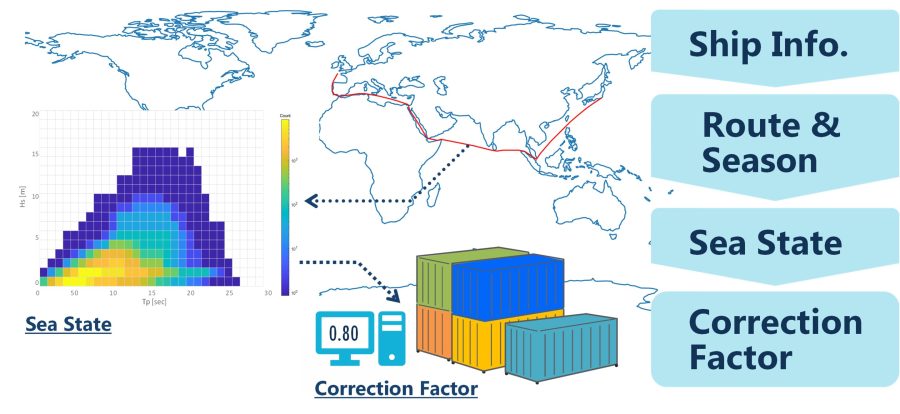
Calculation flow of the correction factor
Accounting for the growth in container ship size and the evolution of lashing techniques, the guidelines offer an overview of the transportation and securing of cargo at sea, types of container ships, types of freight containers and stowage methods on exposed decks and in cargo holds. The publication goes on to describe typical standard values related to the strength of containers and securing devices before detailing precautions for hull strength related to stowage and securing arrangements and outlining a strength evaluation method for these arrangements.
The strength evaluation covers container stowage and securing arrangements on deck and in the hold. It begins with the estimation of loads acting on the container, including ship motions and accelerations – and the correction of these according to sea route and season – as well as the dynamic and wind loads acting on the containers. The strength evaluation also considers stiffness constants for containers, lashing rods and lashing bridges in addition to allowable loads for containers and securing devices. As explained in the guidelines, this can be carried out using a lashing calculation program. In addition, ClassNK plans to release an application for calculating route correction factors and tools for use in strength evaluations of container stowage and securing arrangements.
Preventative measures
Meanwhile, Guidelines on Preventive Measures against Parametric Rolling (Edition 1.0) describes the mechanism and features of parametric rolling as well as the requirements for granting notations for ships with effective preventive measures. It also outlines key points for preventing it, including early avoidance of danger zones and immediate course change on detecting any signs of the phenomenon. This requires special attention to the direction and encounter period of swells as well as awareness of vessel-specific characteristics including natural roll period, estimated roll angle – knowledge of which is particularly important for larger vessels – and vulnerability to parametric rolling.
As outlined in the guidelines, a ship’s vulnerability to parametric rolling can be evaluated using one of several methods described in the International Maritime Organization’s second-generation intact stability criteria. By carrying out series calculations of the predicted roll angles in various navigation conditions and sea states, it is possible to prepare materials such as polar charts showing the degree of danger of parametric rolling. These charts, in conjunction with operational guidance indicating the action to be taken upon encountering danger of or above a certain degree, can support the avoidance of parametric rolling by enabling the captain to make well-informed decisions.
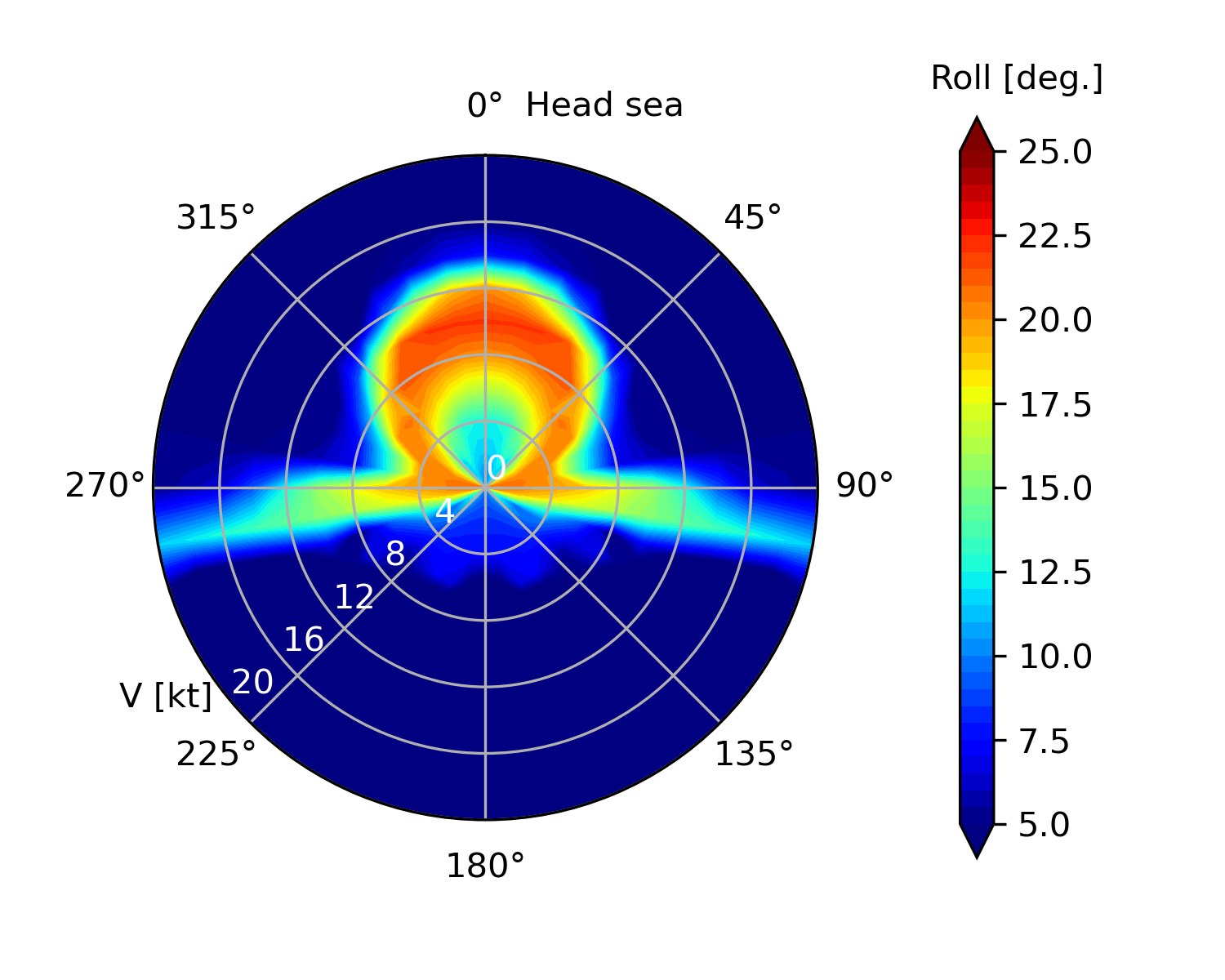
Example of polar charts of estimated parametric rolling angles
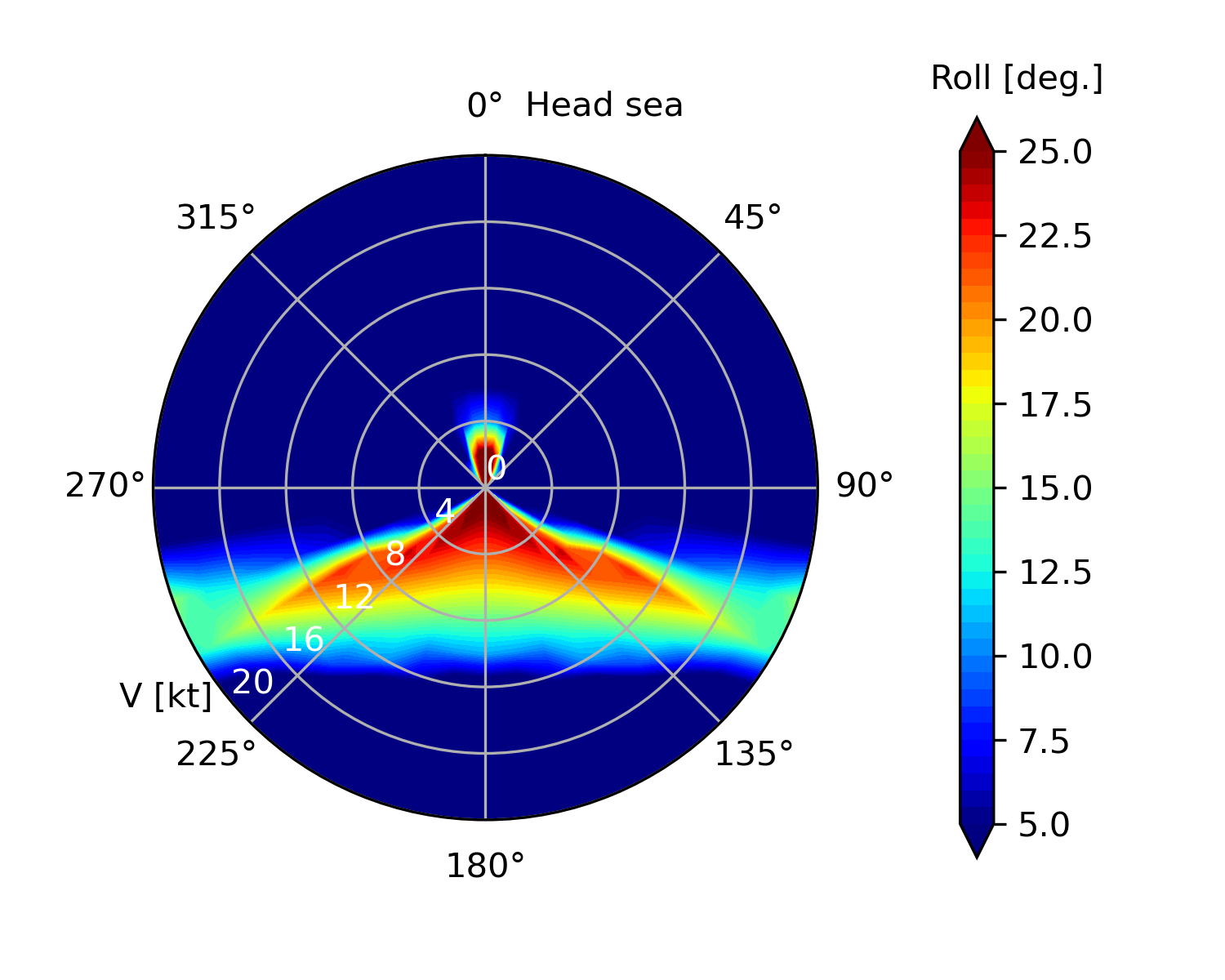
Monitoring and alert systems may further enhance decision-making. For example, wave radars can accurately observe the direction, period and height of waves and swells and are especially effective at night, when waves cannot be observed visually. While the technology is not yet commonly used as a preventive measure against parametric rolling, its potential is evident. Other conceivable solutions warranting further investigation include natural roll period measurement systems, integrated alert systems combining wave radars and polar charts, real-time simulation and ship-motion data analysis.
Onboard devices
Parametric rolling can already be minimised using onboard devices. Fin stabilisers, which have a significant damping effect, are proven to reduce rolling during navigation, while anti-roll tanks achieve a similar effect utilising the phase difference obtained by moving liquid between the port and starboard tanks when ship rolling occurs. Although generally less effective than fin stabilisers, rudder roll stabilisation systems, which leverage the rolling moment of the rudder force, are a cost-efficient alternative that, unlike fin stabilisers, function well even at low speeds. Enlarged bilge keels can also prevent or reduce parametric rolling thanks to their increased damping force, while a comparable effect can be expected with the installation of appendages similar in shape to the skeg of a yacht.
For more information on ClassNK’s Guidelines for Container Stowage and Securing Arrangements (Edition 3.1) and Guidelines on Preventive Measures against Parametric Rolling (Edition 1.0), including summary movies, visit MyPage > Guidelines of www.classnk.com.
